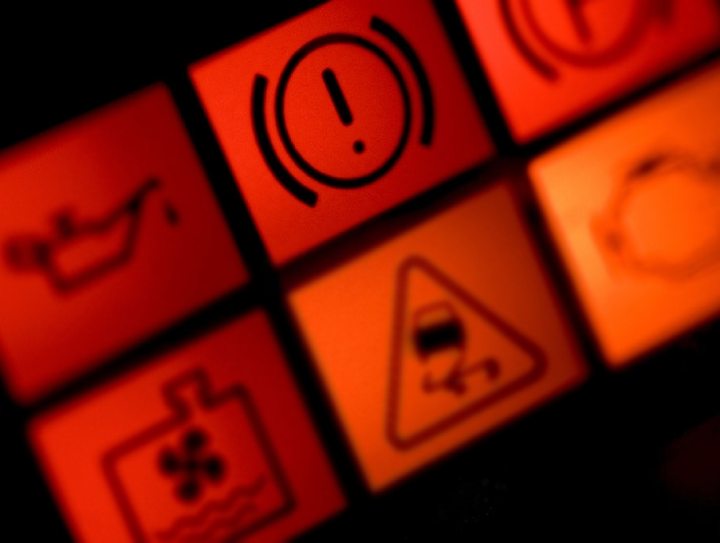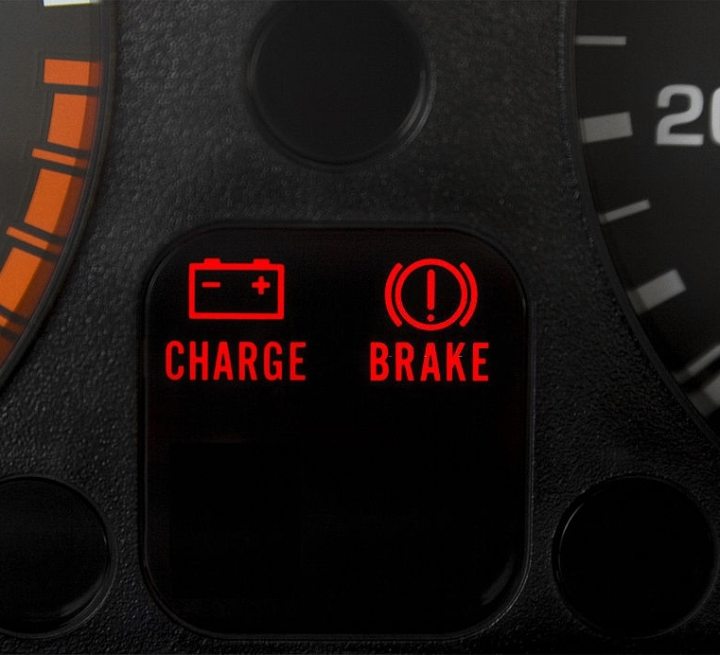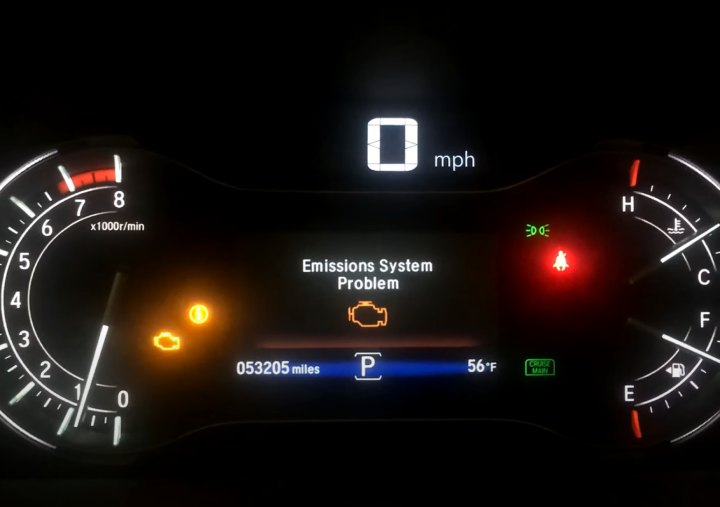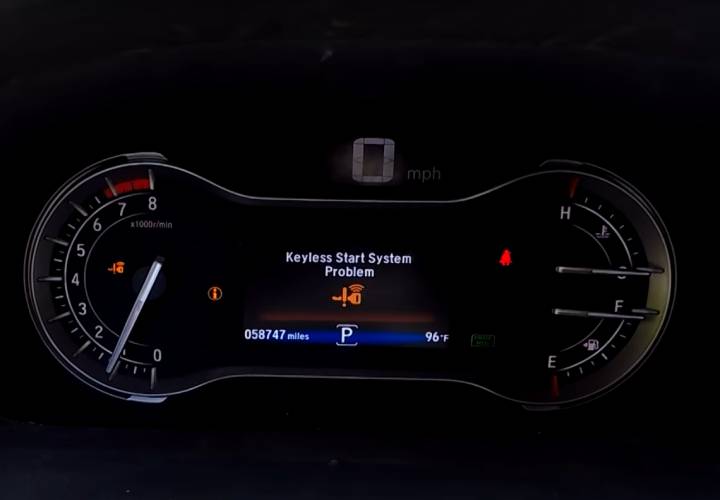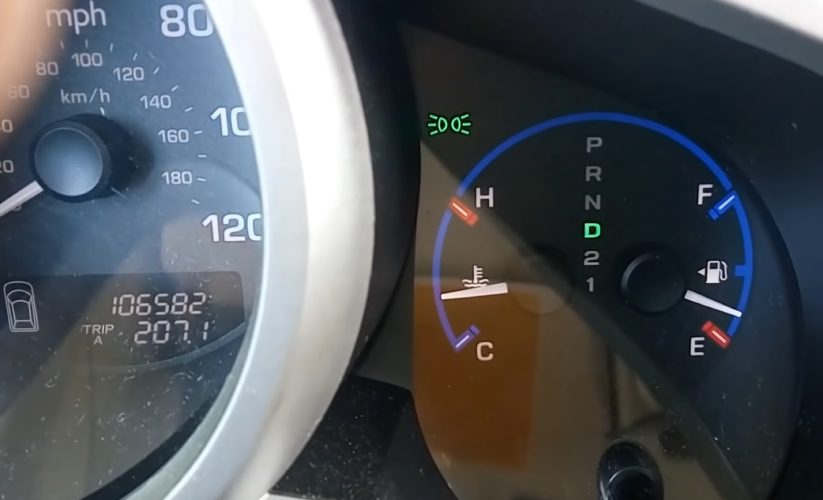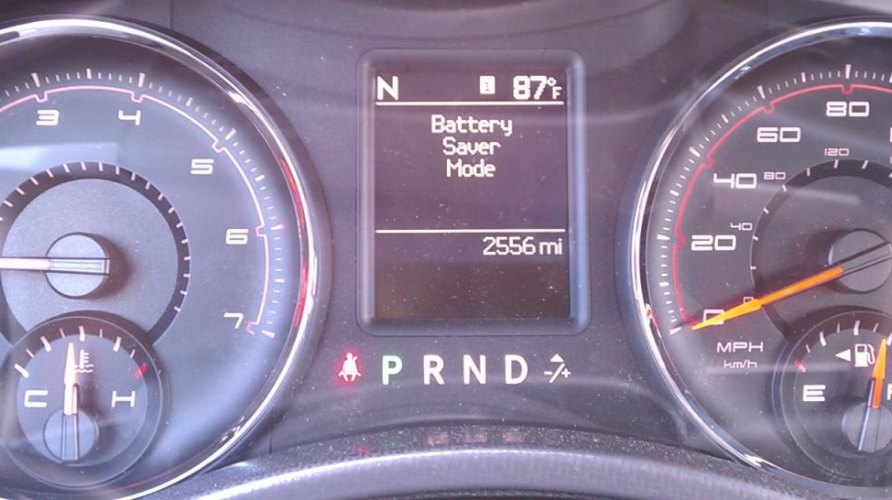As technology advances, we have become aware of how much energy we consume and how it affects our environment. This awareness has led to remarkable changes in the technology around us, especially in the automobile industry.
With each new car iteration comes a promise of greater miles with lower fuel. But perhaps the most significant change is the slow but sure transition from gasoline vehicles to electric vehicles or EVs. In this article, we will discuss one fascinating aspect of EV technology: Regenerative Braking.
Here is what Regenerative Braking Temporary Reduced means
If you own a Tesla, there is a chance you’ve come across the message that the “Regenerative Braking is temporarily reduced.” This message may be unclear to a new Tesla owner, but it simply means that the regen braking won’t function as it should.
That means it may take longer than usual to slow down the car or even bring it to a stop. You should know that this is normal, and there is no need for you to take your vehicle in for maintenance. There is absolutely nothing wrong with your EV.
Here are the three main reasons why your regen braking may be temporarily reduced. It is either because your battery is fully charged, the battery is cold, or there is too much charge for the car’s battery to keep up with.
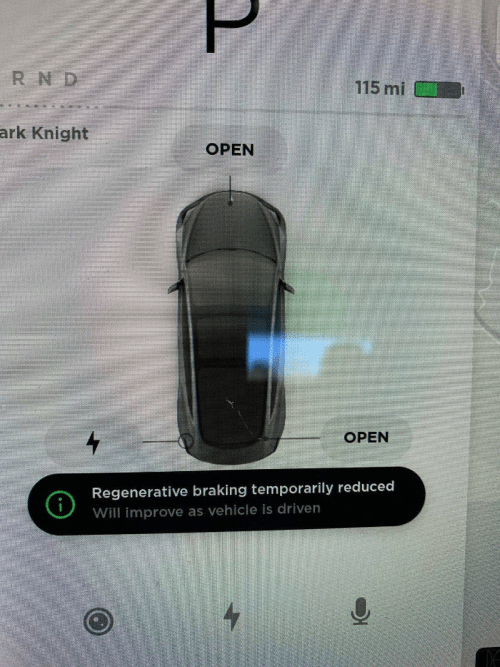
01. Your Battery is 100% charged
One big challenge EV owners face is juicing up their car batteries. Despite the advanced charging technology, it still takes considerable time to charge up and get going once your batteries run out. To avoid this, most people charge their EV over the night to ensure it gets to 100%.
This is great because you get to have the full range capability of your EV without worrying about running out. At the same time, you will be trading one of the nifty features of your EV for that full charge, and that is regenerative braking. Apart from slowing down the car, regenerative braking also charges the battery.
Both actions are performed simultaneously. But regenerative braking stops working when your batteries are fully charged because the car is less energy efficient. To avoid this, you should keep your batteries between 90% and 95% charge.
02. The battery is too cold
If you own an EV, then be sure to watch out for winter. The colder it gets, the harder it is to charge the battery. This is because when it gets too cold, the electrolyte in the Lithium-ion battery becomes dense. The denser the electrolyte is, the more difficult it is for ions to move between the electrodes.
Since this process is required for the battery to charge, it therefore, means that as the battery gets cold, it becomes difficult to charge it. The temperature a which the battery stops charging completely is about 32•F (for Tesla, may differ for other EVs. But once it gets below 68•F, regenerative braking is reduced because the charging capacity of the batteries is reduced. However, regenerative braking will be restored once the batteries have warmed up (after driving for a few minutes).
03. Too much charge for the battery to keep up with
The third reason why regenerative braking may be reduced is that the batteries get too much electricity in an instant. This happens if you drive at high speed and suddenly decelerate the car to a stop. All that speed will be converted to electricity and fed into the battery. This could overload the battery and to prevent this, the vehicle’s control unit will temporarily disable regenerative braking. At this point, the mechanical braking systems will kick in.
What is Regenerative Braking?
One of the most common actions we perform when driving a car is braking, whether we only want to slow down for a moment or come to a complete stop. This is something any driver has done countless times. However, most people don’t realize how much energy is wasted in the process. The car’s static energy is converted to heat as the driver matches the brake pedals.
Well, that was the case for most old cars, but today, most cars, especially hybrid or EVs, come with regenerative brakes.
Regenerative brakes are a technology that allows all your car’s kinetic energy to be converted into electric energy that can be used in charging the car batteries. So instead of wasting all that energy in the form of heat, we use it to give our car batteries an extra boost.
The technology was unveiled in 1967 by America Motors Company (AMC). But it only became popular with the growing number of hybrids and Electric vehicles.
How Regenerative Braking Works
The reason regenerative braking systems became popular in EVs is that they are driven primarily by an electric motor powered by a battery. When accelerating, the electric motor provides the torque that rotates the wheels. But when decelerating (slowing down), the electric motor acts as a generator and supplies electricity to the battery. The regenerative braking system can be triggered in two ways; the first is when the driver relieves the pressure on the pedal (throttle).
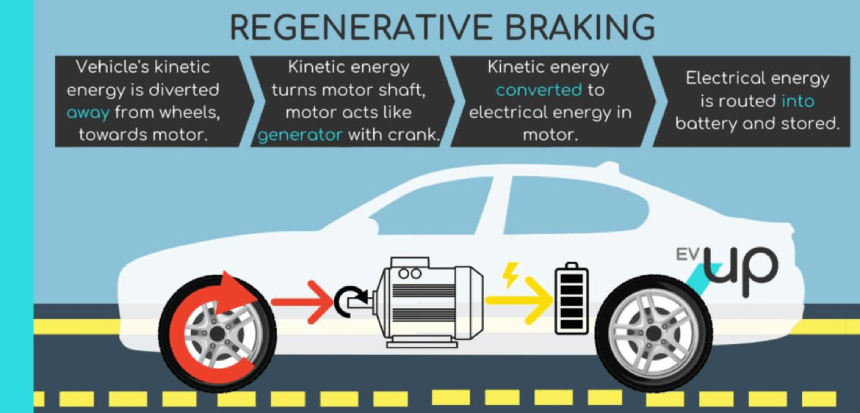
The central computer of the car detects this and immediately activates regenerative braking. The force of the regen will depend on the pressure applied to the accelerator pedal. The lower the pressure applied (as the driver removes his foot from the pedal), the higher the regenerative braking force. This system where the driver can accelerate and decelerate the car using one pedal is known as One pedal driving. This is the system that is commonly found in Teslas.
On the other hand, some EVs have the usual brake pedal, and when the driver applies pressure on this brake pedal, regenerative braking is activated. This is similar to the normal two-pedal driving system found in most automatic vehicles. Either way, regenerative braking is usually supported by the normal mechanical braking system in case an emergency stop is required. That is if the driver intends to bring the vehicle to a halt instantly.
The reason is that regenerative braking is perfect for a slow and gradual stop. This hybrid brake system may seem overkill, but it has its own advantage. Using regen braking with mechanical braking prolongs the life of the mechanical braking system by reducing the rate at which the brake pads wear out.
Frequently Asked Questions
How do I know if my regenerative braking is reduced?
You will see a blue snowflake icon on the car touchscreen. This means your car batteries are too cold, and because of this, you may not have access to regenerative braking. The icon disappears when the battery warms up.
At first, most Tesla users would see a message displayed on the screen telling them that the regenerative braking is reduced. But this created so much confusion as some drivers were unsure if it was safe to drive. To clarify this, the message was updated and now says “Limited deceleration when the accelerator is released. OK to drive – Use brake pedal as needed.”
Using the Tesla Energy bar
The Energy bar or power meter on your touch screen lets you know how power is being used or generated by your Tesla. The power meter is a thin line with a bar that moves left or right. When the bar moves to the right, it shows that your Tesla is using up power which happens during acceleration. When it moves to the left, the bar turns green, indicating that your Tesla is generating power that will charge the battery. Occasionally you may see green dots on the left side of the energy bar. This suggests that the regenerative braking will be reduced at that point. The more the dots, the lower the regenerative braking.
How can I turn off regenerative braking on my Tesla?
You can not turn off the regenerative braking on your Tesla. There was an option for Tesla drivers to reduce the amount of regenerative braking by choosing standard or low. But this has been removed and the whole process is now set at a default level for all Teslas. Tesla drivers have little control over the system by toggling the stopping mode between creep and roll.
Does regenerative braking reverse the motor?
Yes. Regenerative braking reverses your TeslaTesla’sr. When the motor runs in the reverse direction, it acts like a generator that charges the batteries. When the pressure is applied to the accelerator pedals, the motor receives power from the battery and once again drives the wheels.
How efficient is TeslaTesla’sn braking?
Technically, no system is 100% effective because energy loss is inevitable. However, regen braking can recapture a certain percentage of the energy wasted during braking. While no specific data shows how much energy is recaptured, the average rate is between 60 – 80%.
The energy recaptured depends on the model of Tesla you own. Tesla generates about 60 KW with each hard regen braking. But this limit differs with each model and can be changed with a software update. So if your Tesla model has a higher maximum regen output, it only captures more energy when braking.
Does Tesla Regen use brakes?
No. The regenerative braking system doesn’t use mechanical brake pads. However, when the regenerative brake isn’t active, your Tesla switches over to the mechanical brake. The switch is often smooth, and however, if your Tesla model has only one pedal, it may take some time to get used to it.
Can you adjust regenerative braking on a Tesla?
No. Regenerative braking on Tesla is performed automatically by the system. The driver has no direct control over how much regen braking power is applied.
Conclusion
Regenerative braking is not a new technology. But we are only beginning to see its application on a large scale as EVs, and Hybrid cars become more popular. Is it a perfect technology? No, there is still room for improvement. However, what has been achieved so far is impressive.
If you own a Tesla or any other EV, you’d see the value of this technology, and it is only normal to have some questions. This article has addressed common questions concerning regenerative braking, and hopefully, you’ll find it helpful.
Iliah is the co-founder of Mechanic Ask, where he writes detailed step-by-step tutorials for repairs and mods. He also posts videos walking through things like engine swaps, suspension lifts, and tuning chips. Iliah uses his blog as an educational resource for car enthusiasts based on the knowledge he’s gained from 15 years as an ASE-certified master technician. His repair manuals provide even novice readers the confidence to take on big projects.




